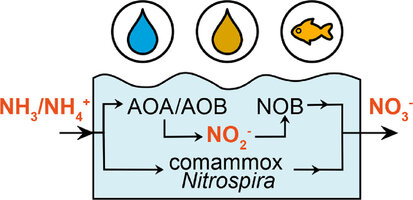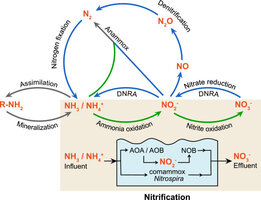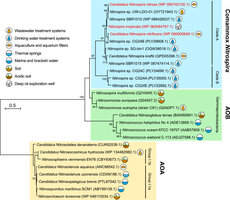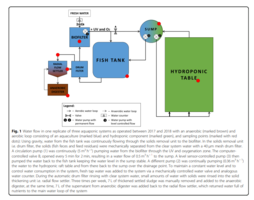Hi all,
This review paper - <"Ammonia-oxidizing archaea and complete ammonia-oxidizing Nitrospira in water treatment systems"> has recently come my way.
Al-Ajeel, S., Spasov, E., Sauder, L.A., McKnight, M.M. and Neufeld, J.D., 2022. "Ammonia-oxidizing archaea and complete ammonia-oxidizing bacteria in water treatment systems". Water Research X, p.100131. <Ammonia-oxidizing archaea and complete ammonia-oxidizing Nitrospira in water treatment systems>.
Because we have a continual trickle of threads on the <"best way to start a tank"> and <"cycling"> - <"Dr Timothy Hovanec's comments about Bacterial supplements"> I thought I'd start a new thread.
I'm not sure how much is available to everyone, I downloaded it at work, but I can email the pdf to any-one who wants a copy?
The reason it is such an interesting paper is that it discusses both water, wastewater and ammonia loading, in the wider context, and also specifically in aquarium filters.
If any-one wants to "cut to the chase", this is the <"Aquarium Filter section">.

cheers Darrel
This review paper - <"Ammonia-oxidizing archaea and complete ammonia-oxidizing Nitrospira in water treatment systems"> has recently come my way.
Al-Ajeel, S., Spasov, E., Sauder, L.A., McKnight, M.M. and Neufeld, J.D., 2022. "Ammonia-oxidizing archaea and complete ammonia-oxidizing bacteria in water treatment systems". Water Research X, p.100131. <Ammonia-oxidizing archaea and complete ammonia-oxidizing Nitrospira in water treatment systems>.
Because we have a continual trickle of threads on the <"best way to start a tank"> and <"cycling"> - <"Dr Timothy Hovanec's comments about Bacterial supplements"> I thought I'd start a new thread.
I'm not sure how much is available to everyone, I downloaded it at work, but I can email the pdf to any-one who wants a copy?
The reason it is such an interesting paper is that it discusses both water, wastewater and ammonia loading, in the wider context, and also specifically in aquarium filters.
If any-one wants to "cut to the chase", this is the <"Aquarium Filter section">.
...... Nitrification, the oxidation of ammonia to nitrate via nitrite, is important for many engineered water treatment systems. The sequential steps of this respiratory process are carried out by distinct microbial guilds, including ammonia-oxidizing bacteria (AOB) and archaea (AOA), nitrite-oxidizing bacteria (NOB), and newly discovered members of the genus Nitrospira that conduct complete ammonia oxidation (comammox).
Even though all of these nitrifiers have been identified within water treatment systems, their relative contributions to nitrogen cycling are poorly understood. Although AOA contribute to nitrification in many wastewater treatment plants, they are generally outnumbered by AOB. In contrast, AOA and comammox Nitrospira typically dominate relatively low ammonia environments such as drinking water treatment, tertiary wastewater treatment systems, and aquaculture/aquarium filtration..........

cheers Darrel
Last edited:






